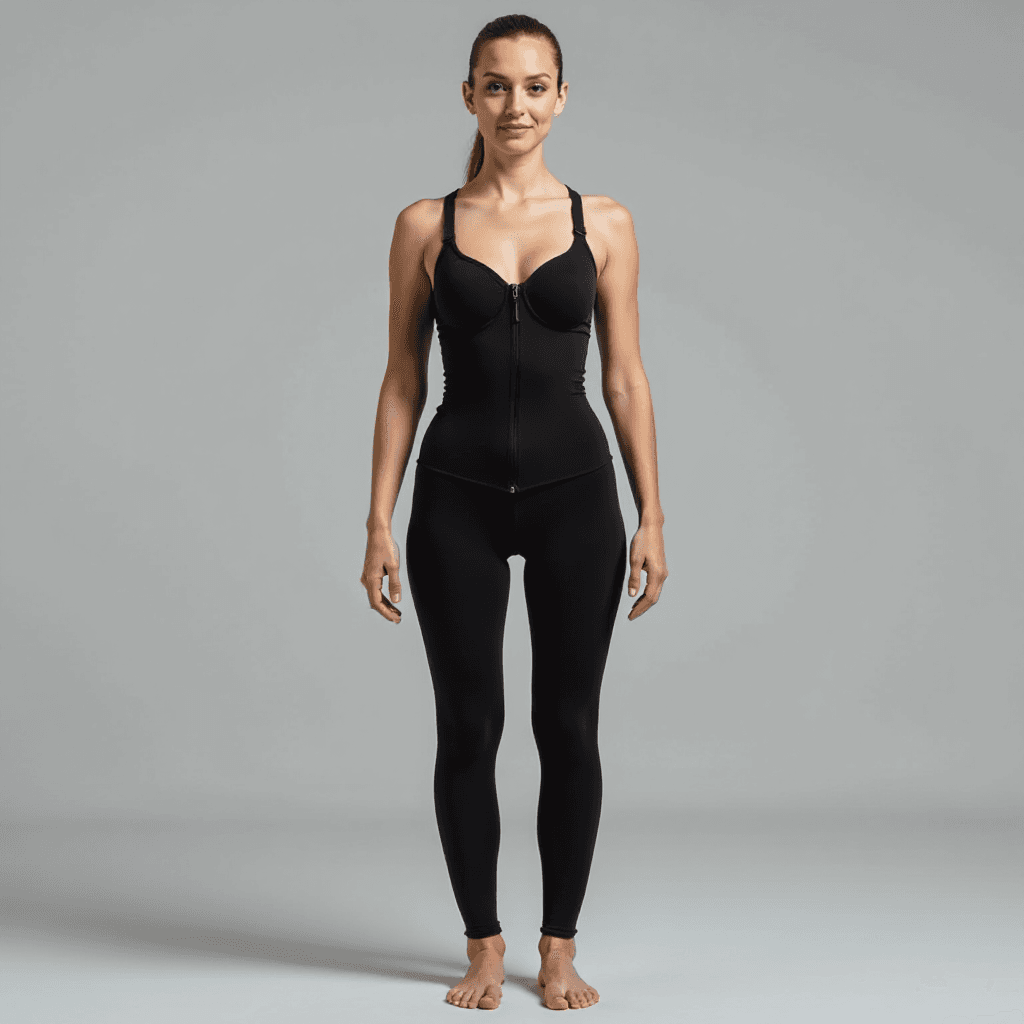
Introduction
The right fabric can make all the difference in dancewear, impacting not only performance but also comfort and endurance. Dancers rely on clothing that moves seamlessly with their bodies, offering flexibility, breathability, and durability through hours of rehearsals and performances. Two of the most commonly used materials in dance apparel are nylon spandex and polyester, each with distinct properties that cater to different needs.
Nylon spandex, known for its exceptional stretch and softness, is a favorite for form-fitting leotards, leggings, and unitards. On the other hand, polyester, valued for its moisture-wicking and resilient qualities, is often used in costumes and active dancewear. But when it comes to choosing the best fabric for dancers, which one truly stands out?
This article examines the strengths and weaknesses of nylon spandex vs. polyester in dancewear, comparing factors like comfort, durability, moisture management, and cost. By the end, you’ll have a clearer understanding of which fabric better suits your dance style and performance needs.
Understanding the Fabrics
Choosing the right fabric for dancewear starts with understanding the materials themselves. Nylon spandex and polyester each have unique compositions and characteristics that affect their performance in dance apparel. Let’s break them down.
What is Nylon Spandex?
Nylon spandex is a blend of nylon (a synthetic polymer) and elastane (also known as spandex or Lycra). Typically, the fabric consists of 80-90% nylon and 10-20% spandex, creating a stretchy yet durable material.
Key Properties:
- Superior Stretchiness: The high spandex content allows for four-way stretch, meaning the fabric expands and recovers in all directions—essential for dynamic dance movements like leaps, splits, and bends.
- Soft, Smooth Texture: Nylon spandex is lightweight and silky, reducing friction against the skin and preventing irritation during prolonged wear.
- Moisture-Wicking: While not as quick-drying as polyester, it pulls sweat away from the body, keeping dancers relatively dry during intense routines.
- Form-Fitting Comfort: The fabric clings to the body without restricting movement, making it ideal for leotards, leggings, and compression dancewear.
However, nylon spandex is less resistant to UV damage and pilling compared to polyester, and it may lose elasticity over time if not cared for properly.
What is Polyester?
Polyester is a fully synthetic fabric made from petroleum-based fibers. It’s widely used in activewear, sportswear, and dance costumes due to its resilience and versatility.
Key Properties:
- High Durability: Polyester is stronger and more abrasion-resistant than nylon spandex, making it less prone to tears or snags—ideal for costumes that undergo frequent wear and washing.
- Moisture Resistance: Unlike nylon, polyester does not absorb water easily, allowing sweat to evaporate quickly. This helps dancers stay cooler and drier, especially in high-energy styles like hip-hop or jazz.
- Breathability (Varies): While standard polyester can trap heat, performance-grade versions (like moisture-wicking or mesh polyester) improve airflow, making them suitable for intense dance sessions.
- Wrinkle & Shrink-Resistant: Polyester holds its shape well, even after repeated use, and is less likely to stretch out over time.
However, pure polyester lacks the natural stretch of nylon spandex, which is why it’s often blended with spandex (usually 85% polyester, 15% spandex) for dancewear that requires some flexibility.
By understanding these core differences, dancers can make informed choices based on their specific needs—whether prioritizing stretch and comfort (nylon spandex) or durability and moisture control (polyester).
Performance Comparison for Dancewear
When selecting dancewear, performance is everything. The fabric must keep up with a dancer’s movements while providing comfort, breathability, and longevity. Below, we compare nylon spandex and polyester across key performance factors.
Comfort and Flexibility
Nylon Spandex:
- Superior stretch (thanks to 10-20% spandex content) allows for full range of motion, making it perfect for ballet, contemporary, and other styles requiring extreme flexibility.
- Hugs the body without constricting, offering a second-skin feel that moves seamlessly with the dancer.
- Softer texture reduces chafing and irritation, ideal for long rehearsals.
Polyester:
- Less stretchy unless blended with spandex (typically 85/15 polyester-spandex).
- Provides more structure and support, beneficial for styles like ballroom or Latin dance where shape retention matters.
- Can feel stiffer compared to nylon spandex, which may limit mobility in high-flexibility routines.
Verdict: Nylon spandex wins for unrestricted movement, while polyester offers better support for structured dancewear.
Moisture Management
Nylon Spandex:
- Wicks sweat away from the skin, keeping dancers dry during intense performances.
- Retains moisture longer than polyester, which can feel damp during prolonged wear.
- Prone to odor retention because bacteria cling to nylon fibers more easily.
Polyester:
- Quick-drying—sweat evaporates faster, making it great for high-energy styles like hip-hop or cardio dance.
- Resists moisture buildup, reducing the risk of fabric sticking uncomfortably to the skin.
- Naturally odor-resistant due to its moisture-repelling properties.
Verdict: Polyester is better for sweat-heavy routines, while nylon spandex keeps you dry but may hold smells.
Durability and Longevity
Polyester:
- Highly resistant to wear, tear, and abrasion, making it last longer under frequent use.
- Holds color well, resisting fading from UV exposure (great for outdoor performances).
- Less prone to pilling, maintaining a smooth appearance over time.
Nylon Spandex:
- More delicate—can develop pilling, especially in high-friction areas (inner thighs, underarms).
- Elasticity degrades faster if improperly washed (e.g., hot water, harsh detergents).
- Fades with sun exposure, making it less ideal for outdoor dancewear.
Verdict: Polyester is more durable, while nylon spandex requires gentler care to maintain elasticity.
Breathability and Temperature Regulation
Nylon Spandex:
- Lightweight and breathable, allowing airflow during high-intensity movement.
- Traps less heat, keeping dancers cooler in styles like contemporary or acrobatics.
Polyester:
- Can feel hot and stifling in pure form, as it doesn’t breathe as well as nylon.
- Performance blends (mesh or moisture-wicking polyester) improve ventilation.
- Better for low-impact dance (e.g., ballroom) where overheating is less of an issue.
Verdict: Nylon spandex is more breathable for intense dance, while polyester works better for cooler, less strenuous styles.
Key Takeaway:
- Choose nylon spandex if you prioritize stretch, comfort, and breathability (ideal for ballet, contemporary, or lyrical).
- Opt for polyester if you need durability, moisture control, and structure (better for hip-hop, ballroom, or costumes).
- For the best of both worlds, look for polyester-spandex blends (e.g., 85/15) that balance flexibility and resilience.
Aesthetic and Practical Considerations
Beyond performance, dancewear must also meet visual and practical needs. The choice between nylon spandex and polyester affects not just how the garment performs, but how it looks, feels, and lasts over time.
Fit and Appearance
Nylon Spandex:
- Sleek, Shiny Finish – Offers a polished, professional look that highlights body lines, making it perfect for form-fitting designs like leotards, unitards, and compression wear.
- Seamless Second-Skin Effect – The fabric’s stretch and drape create a flattering silhouette, ideal for styles where body alignment is visually important (e.g., ballet, contemporary).
- Shows Sweat More Noticeably – The smooth surface can make moisture more visible under stage lights.
Polyester:
- Matte, Performance-Oriented Look – Less glossy than nylon spandex, giving a more athletic or casual appearance.
- Better for Layered or Loose Styles – Holds structure well, making it suitable for jackets, skirts, and looser dance pants (e.g., hip-hop, jazz).
- Camouflages Sweat – The texture and matte finish help hide moisture better than shiny nylon spandex.
Best For:
- Nylon Spandex – Ballet, contemporary, and any style where a streamlined look is key.
- Polyester – Street dance, competition costumes, or pieces requiring more volume.
Care and Maintenance
Nylon Spandex:
- Requires Gentle Handling – Elasticity breaks down if washed in hot water or tumble-dried.
- Hand Wash or Delicate Cycle Recommended – Use mild detergent to prevent pilling and fiber damage.
- Avoid Fabric Softeners – They coat fibers, reducing stretch over time.
- Lay Flat to Dry – Prevents warping and maintains shape.
Polyester:
- More Low-Maintenance – Can withstand machine washing and drying (though air drying prolongs life).
- Resists Wrinkles and Shrinking – Doesn’t require special care like nylon spandex.
- Less Prone to Damage from Oils or Sunscreen – A better choice for outdoor performances.
Pro Tip:
- Nylon spandex lasts longer with proper care, while polyester is the “wash-and-wear” option for busy dancers.
Cost and Accessibility
Polyester:
- Budget-Friendly – Generally cheaper to produce, making it widely available at lower price points.
- More Common in Mass-Market Dancewear – Found in everything from beginner leggings to competition costumes.
Nylon Spandex:
- Premium Pricing – Higher cost due to its elasticity and softer handfeel.
- Often Used in Professional-Grade Wear – Favored by elite dancers and brands specializing in high-performance apparel.
Value Consideration:
- If you’re a recreational dancer or need durable, affordable options, polyester is practical.
- For serious performers who prioritize fit and flexibility, nylon spandex is worth the investment.
Key Takeaways:
- Appearance → Choose nylon spandex for a sleek, body-hugging look; polyester for a structured or layered aesthetic.
- Care → Nylon spandex demands gentle treatment, while polyester is hassle-free.
- Cost → Polyester wins for affordability, but nylon spandex offers higher-end performance.
Conclusion: Which Fabric is Better for Dancewear?
The choice between nylon spandex and polyester ultimately depends on your dance style, performance needs, and budget. Both fabrics have distinct advantages that make them suitable for different applications in dancewear.
Key Takeaways:
- Nylon Spandex excels in flexibility, comfort, and breathability, making it ideal for styles requiring full range of motion (e.g., ballet, contemporary, lyrical). Its form-fitting, sleek appearance enhances body lines, while its moisture-wicking properties keep dancers relatively dry—though it may retain odors and requires careful maintenance.
- Polyester stands out for durability, moisture resistance, and affordability, making it a practical choice for high-energy or structured dance styles (e.g., hip-hop, ballroom, jazz). It dries quickly, resists wrinkles, and holds up well under frequent use, though it can feel less breathable in pure form.
Dance Style Recommendations:
- Choose Nylon Spandex if you need maximum stretch and a second-skin fit (e.g., leotards, leggings, compression wear).
- Opt for Polyester if you prioritize longevity, sweat management, or looser silhouettes (e.g., costumes, jackets, streetwear-inspired dancewear).
- Hybrid Option: For a balance, look for polyester-spandex blends (e.g., 85% polyester, 15% spandex), which offer moderate stretch with polyester’s durability.
Final Verdict:
If you’re a serious dancer who values flexibility and premium comfort, nylon spandex is the superior choice. However, if you need budget-friendly, low-maintenance, and hard-wearing dancewear, polyester delivers excellent performance.
Ultimately, the “better” fabric comes down to your individual needs—whether that’s the ultra-stretch of nylon spandex or the resilience and practicality of polyester. By understanding these differences, you can select dancewear that helps you move with confidence, style, and ease.
